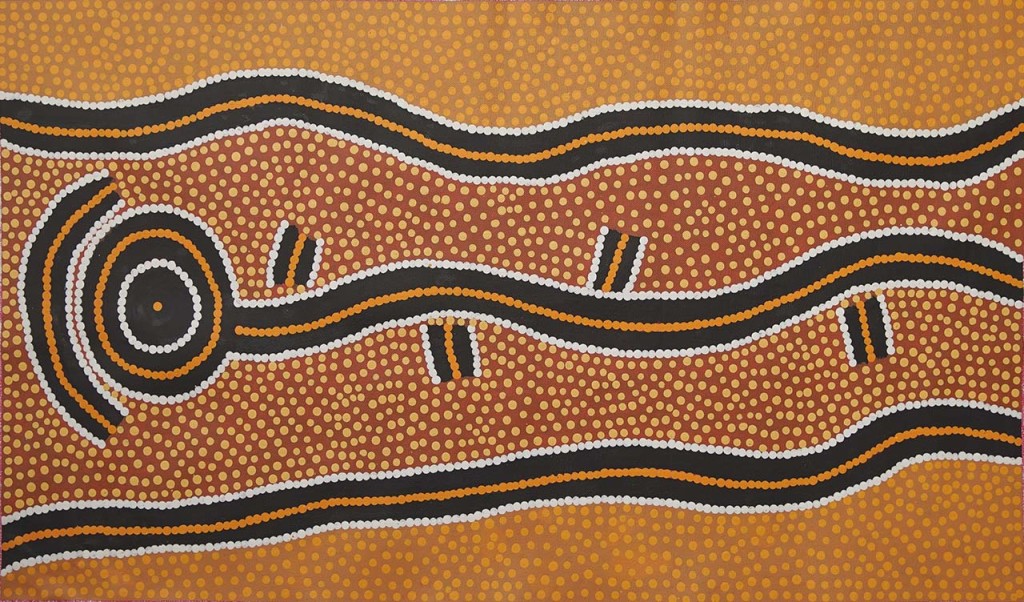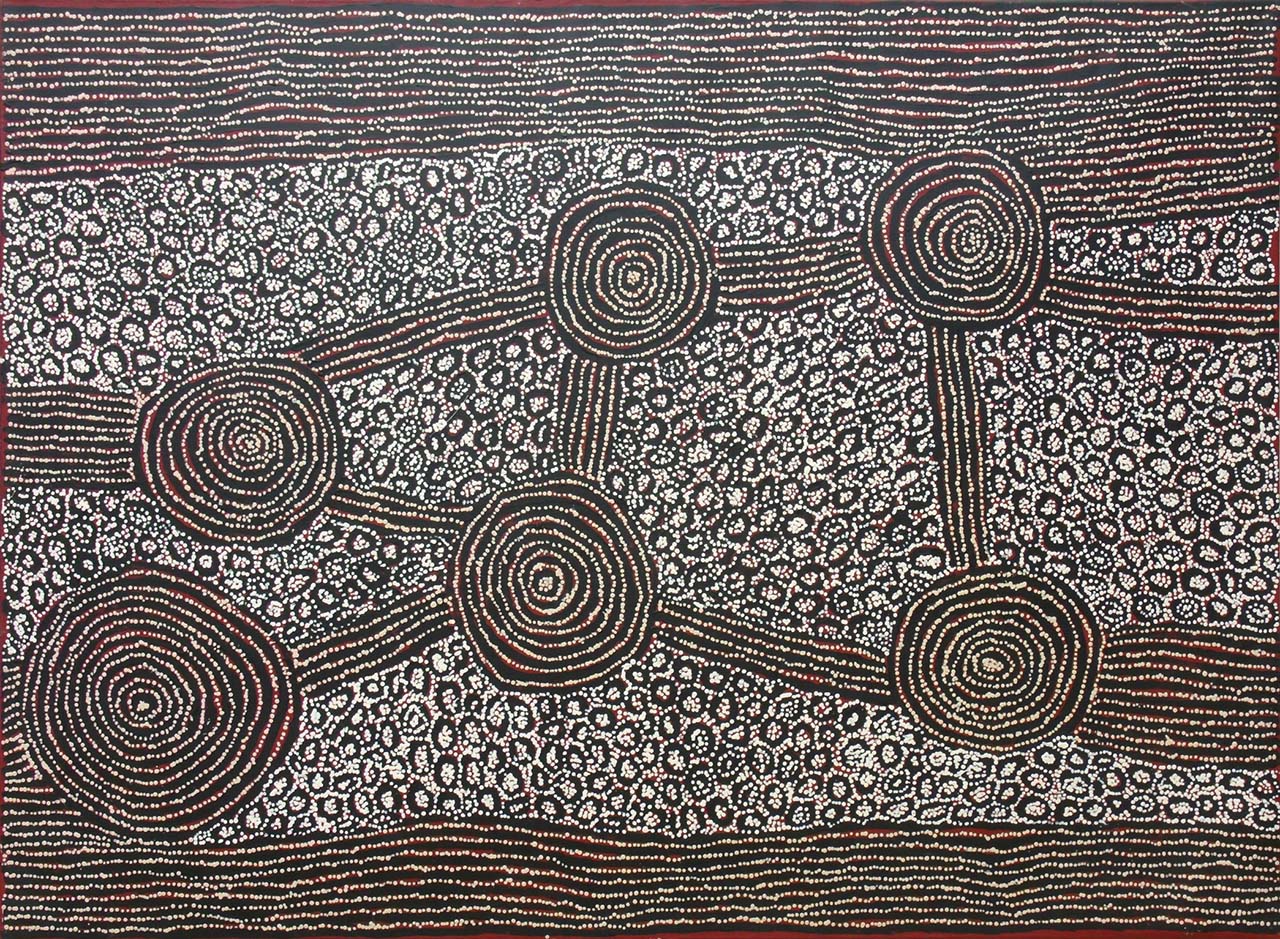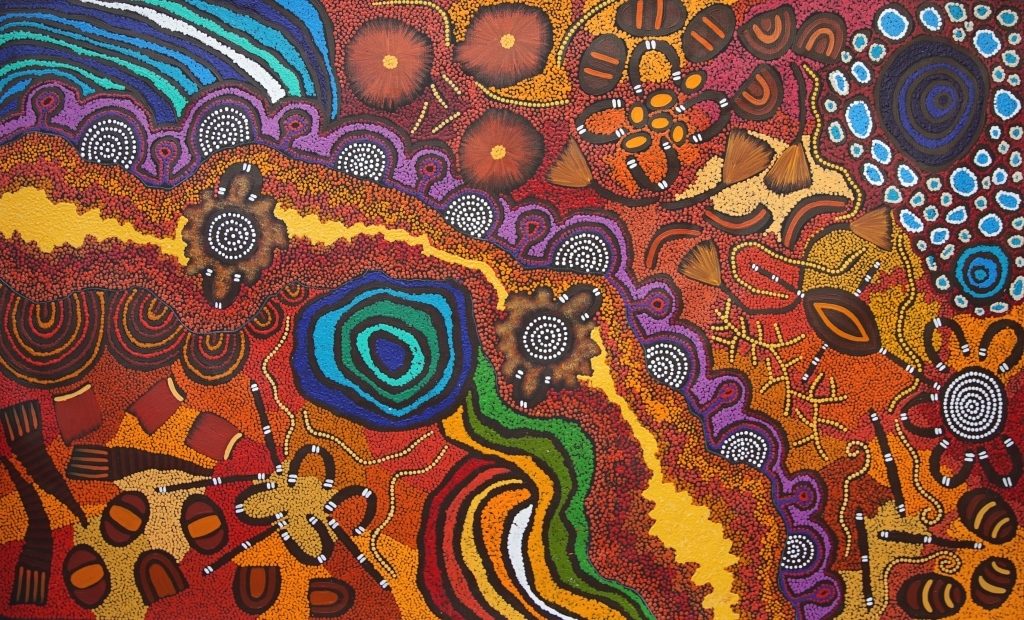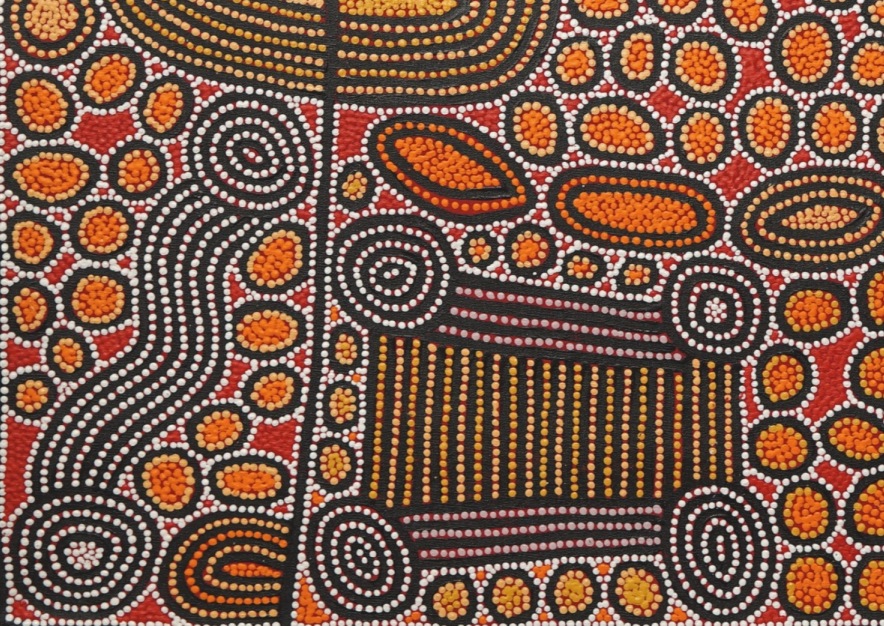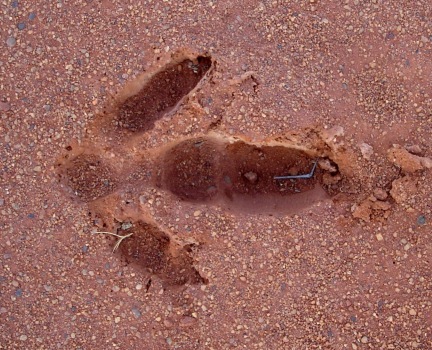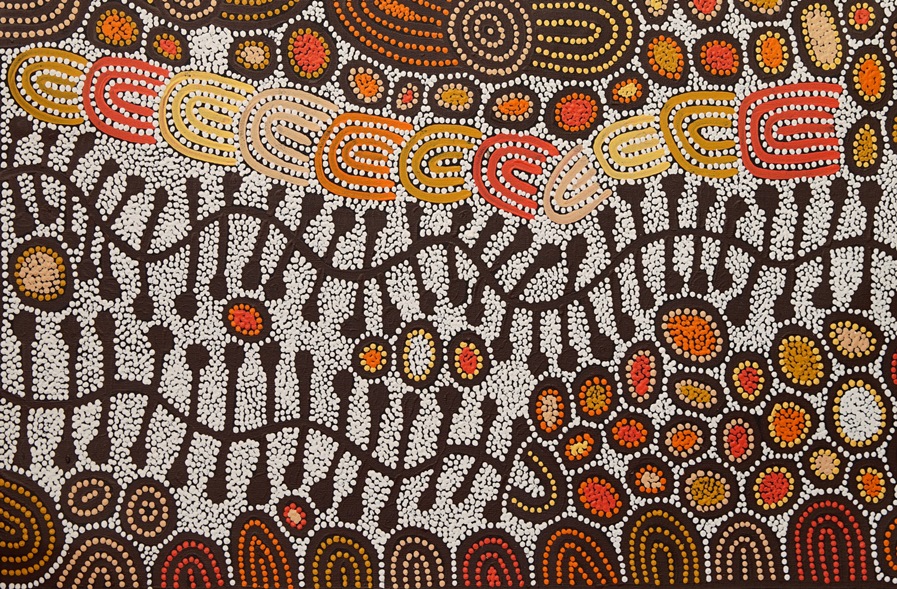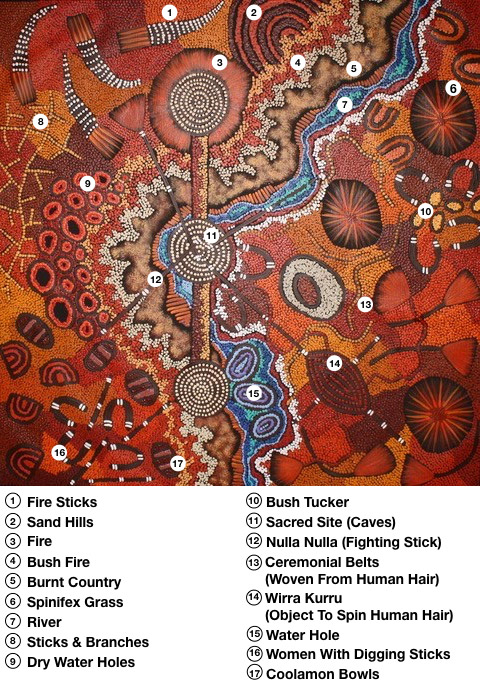Australian Aboriginal Art Symbols and their Meanings
David Wroth, Director of Japingka Aboriginal Art Gallery, provides a perspective on the use of symbols in Aboriginal art, and introduces Indigenous Australian artists talking about how they use symbols in their own work.
Most people will recognise Aboriginal art symbols as being an integral part of Aboriginal artworks, even from the very first exhibition they see. Often there are information sheets provided that help explain the images in the painting.
You might find yourself looking at the artwork and then looking at the information board and taking in the meaning or the story.
In my case, this happened in the 1970s when we first started seeing Central Desert artworks at the Art Gallery of Western Australia. These were paintings coming from Papunya community. I remember the experience of seeing those first paintings and taking in the brief information boards that went with them. Those early exhibitions were often accompanied with catalogues that contained explanations for a range of the symbols most commonly used.
Individuals Use Symbols Differently According To Context
This group of artists from Papunya were using symbols from the Western Desert and the Central Desert traditions. In some ways, these were shared between the artists. In other respects, every individual had a different way of putting the symbols together to create meaning in the artwork. It wasn't as though you felt you were getting the complete symbolic language from these paintings. It seemed that every artist had their own take on the use of symbols to best represent the stories as they wanted to tell them, or as they were culturally obliged to use them.
Water & Lightning Rain Dreaming by Long Jack Phillipus
Aboriginal Symbol Meanings Vary
Over time I gained some recognition of the symbols that Central Desert artists were using. I came to understand that symbols were from a continuous tradition going back to rock art and sand painting. It's a bit like trying to get familiar with a language, knowing that there are idioms or colloquialisms. People from a location will put together phrases in their everyday conversation. I came to see that Indigenous artists put together groups of symbols as their way of telling a story. Artists had their own stylistic and technical approach to how they use all the elements in their painting - spacial composition, colour and symbols.
Symbol Ideas Evolve Through Sharing
The symbols from the Western Desert are a resource for Aboriginal artists in this region. They're an expansive way of taking meaning and putting it into painting. Symbols can vary slightly between different language groups, and between different artists and family clans. In the early Western Desert movement, the sharing of ideas was prevalent. It helped artists to rapidly accommodate new ways of painting, viewing art and incorporating symbols into the kind of narratives that they were telling through their art.
Communication About Cultural Sharing
In Papunya in those early years of the 1970s, Aboriginal artists had greater access to Western art materials, to canvas and acrylic paint. For the first time, they were working together as artists in close physical proximity. There was already a great deal of shared kinship. Five or six different language groups were represented in the group. It was a great accomplishment that the participants were able to negotiate the cultural terrain between the various groups. There was a discussion about what cultural information could be shared and how it could be shared. Ideas moved quickly, and some ideas took hold, and other ideas became less important over time.
The symbols they used are at the heart of what those early paintings were about. There are some detailed books subsequently produced that explore those Papunya artworks and their meanings. There are further catalogues supporting exhibitions that also give us insight into how each specific artist uses symbols in their paintings. Even with exposure to those paintings and that information, there is no guarantee that the meaning of those symbols can be reapplied directly to other artworks that we see.
Tingari by George Ward Tjungurrayi
Individual Symbols Sheets Are Useful
To accurately understand what symbols mean in an artwork, you need to have information direct from the artist. A broader familiarity with the symbols is a starting point that you can refine as you get more information. You need to have details from the artist about the story, how it unfolds and how it relates to the country in which it is set. This gives you a broader context to understand how the symbols are used in an artwork.
Broader Knowledge of Symbols Is A Starting Point
We can stand in front of some of those great works, and even contemporary paintings today that come from the Western and Central Desert, and we can have a sense of what the symbols are and where they came from. That helps us understand that there is a story being played out and maybe we can understand some of the connections. However, until the artist describes how those symbols connect up to make a narrative, I think at best all we've got is a sense that this painting may contain the story of an Ancestor traveling or perhaps a Dreaming site, because of the type of symbols used. Getting beyond that is difficult for an outsider, and therefore that meaning belongs to the artists and to her or his immediate clan group who share that story.
The symbols are at the core of the painting, and at one level they contain some meaning of the painting. At another level, they're just part of the language that the artist uses to tell the story. We have to be brought into the meaning of those particular paintings before those symbols can start to reveal to us what the artist is talking about.
My Country by Damien and Yilpi Marks
Use of Aboriginal Symbols Spread Through Communities
The symbols used by Papunya artists are now a resource shared by Desert communities within a radius of thousands of kilometres. Even in the earliest stages of the desert art movement, there was a discussion about the extent to which Dreaming or Tjukurrpa stories should be revealed to outsiders and to the Western world. The concern was that the culture at the heart of Aboriginal law was the most important thing that traditional people owned. There was an argument that telling outsiders about that could dilute the strength of Aboriginal culture.
Some Resistance To Sharing of Cultural Symbols
There remained some strong resistance from the early days of desert painting within certain groups. Some felt that the cultural communication with outsiders was dangerous, while others felt it was an important step forward. At one level that universal set of symbols was embraced by the art world interested in Aboriginal Australia. At another level, there's a whole other set of realities and ways of painting, which includes landscape painting and other kinds of figurative painting that didn't necessarily come directly from Dreaming stories. Those traditions were also incorporated into the styles of various communities. I sense that what happened in those communities was that people made assessments about what they wanted to show in their art, and how they wanted to show it, and what methods they would use to tell the stories of their community.
Tali by Eubena Nampitjin
How Art Evolves in Different Regions
The Western Desert style is very strongly symbol-based, starting with Papunya in the early 1970s and then moving to Kintore and Kiwirrkurra in the early 1980s. It started that way and maintained the emphasis throughout the next four decades. Other communities have taken a more liberal or developmental approach to their painting and have moved away from the use of symbols and narratives to tell stories. Even when the Central Desert movement style moved as far as Balgo in Western Australia there was a change. The tight dot painting that was typical of the Papunya Tula works became a different style, where dots were applied very loosely and were joined up by moving a brush across the canvas. In this case, artists took the existing structured style and gave it an artistic or personal treatment that was to move the art in a new direction. Paintings from Balgo started to look very different to those from Kiwirrkura and Kintore.
I believe that the symbols were shared culture for desert communities and the role that they played in the emerging desert art movement was varied from the way those symbols were used in teaching and passing on knowledge in traditional methods of sand painting and ceremonial painting. Some communities kept that closeness between the symbols and traditional practice, while other communities wanted to move it further apart, in order to free up their art and potentially give it an independent life from the traditional use of symbols.
Context Matters
The use of symbols in Desert art relies on the context of the use. It's not like hieroglyphics, in that you can't take for granted that a symbol being next to another symbol produces a certain fixed meaning every time. A more interpretive use of these ancient symbols is warranted.
Western Desert Symbols - A Starting Point
While symbols vary widely between the many different Aboriginal cultures found across Australia, there are a number of useful starting points that can help identify potential meanings.
Hunting & Tracking
Aboriginal people of the Central and Western Desert use a range of symbols that derive from their hunting and tracking background. This means that the marks left by animals and humans as track prints in the sand have come to represent those animals and people.
Women's Ceremony by Joylene Reid Napangardi
People
The U shape that is marked on the ground when a person sits cross legged on the earth has come to represent a human. The implements that they carry and put beside them define whether the U shape represents a male or female. A woman may have an oval-shaped coolamon bowl and a digging stick next to her, and this combination of symbols – looking like UOI – represents a woman with her hunting implements. A man may carry spears and possibly boomerangs, so his symbols may look like U || ( .
Minyma Tjukurrpa by Marlene Young Nungurrayi
Where people come together is usually marked as a circle or a set of concentric circles. These can represent a campsite, a fireplace, a meeting place or a waterhole. Where people travel between a series of locations, this journey can be shown as parallel lines linking up between the circles.
Animals
Animals for the desert Aboriginal people are represented by the tracks they leave behind. An emu leaves a three- pointed V track as its footprint. Kangaroos leave a set of mirror-image tick shapes from its back paws with a long line between where its tail drags. A possum or other small marsupial leaves an E shape - a line with four marks coming out from the claw marks.
Emu Tracks
Many of the symbols used in the Central Desert were developed through sand painting, where stories and Dreamtime legends were marked out on the sand as a means of teaching each new generation. Many of these stories revolved around Creation Ancestors who travelled the land and created important sites in the landscape, which were often associated with totemic animals. To tell these stories, traditionally the elders of the tribe used the same types of symbols as Aboriginal artists use today in their contemporary paintings.
For ceremonial use the symbols were also painted onto the bodies of dancers who performed the stories, and this reinforced the links between the people and the timeless stories of the creation of their lands.
Clans
The ceremonial use of certain clan patterns to show that a person has links to a particular clan is used throughout Arnhem Land in the far north of Northern Territory. These patterns made of fine lines drawn in specific ochre colours can represent elements such as fire and water, and when combined with certain totemic animal designs, all signify which clan the owner belongs to. A person’s identity is closely linked to the symbols that they use, and this shows their relationship to the Dreaming story that gives their clan its Creation mythology.
Women's Ceremony by Joylene Reid Napangardi
Spinifex Arts Project
Video: Spinifex artists discuss their work
Sarrita King
Video: Sarrita King talks about her Fire Series and use of symbols
Interview: Symbolism in Aboriginal Art – Thoughts From Sarrita King
Artworks: View Artworks By Sarrita King

